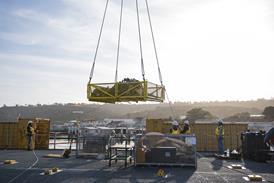Graham Warwick/WASHINGTON DC
Lockheed Martin has taken the first step towards fielding a commercially owned and operated satellite network for worldwide augmentation of the global positioning system (GPS), enabling it "to serve as the backbone for future air navigation".
The company, which signalled its intent last year to take an increasing interest in satellite communications business, has applied to the US Federal Communications Commission for broadcast spectrum and orbital slots for a regional positioning system (RPS). This would use dedicated geostationary satellites to broadcast signals that increase the integrity and availability of the GPS-based wide area augmentation system (WAAS).
Lockheed Martin says the RPS is a company initiative to meet the US Federal Aviation Administration's stated requirement for a WAAS space segment. The FAA declines to comment on the company's proposal, but is expected to make a decision on the WAAS space segment in September.
The FAA is contracted to use two Inmarsat-3 satellites, covering the Pacific Ocean region and the Atlantic Ocean region-west, but the agency has known for some time that additional satellite coverage will be required for full WAAS capability.
The FAA, which has come under considerable pressure from the US Government to resolve the space segment issue, had been considering building its own navigation satellites or going to a consortium to provide the additional satellites. A study of WAAS concluded that four geostationary satellites, in addition to 24 GPS satellites, would satisfy all positioning requirements.
The RPS would be financed by a consortium of investors and customers would be charged for the service. Lockheed Martin says initial service would be provided over the Americas, timed to coincide with the FAA's need for the WAAS space segment. The system would be expanded as other regional customers commit to the service.
"While the licensing approval is in process, we will be lining up venture partners and focusing on securing commitments from anchor tenants who will buy these services," says Don Antonucci, president of Lockheed Martin Air Traffic Management.
RPS would enable WAAS, the first phase of which is to become operational in September next year, to be used for Category 1 approaches. The network would also be compatible with European and Japanese systems.
Source: Flight International























